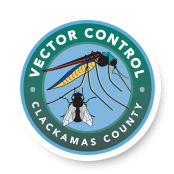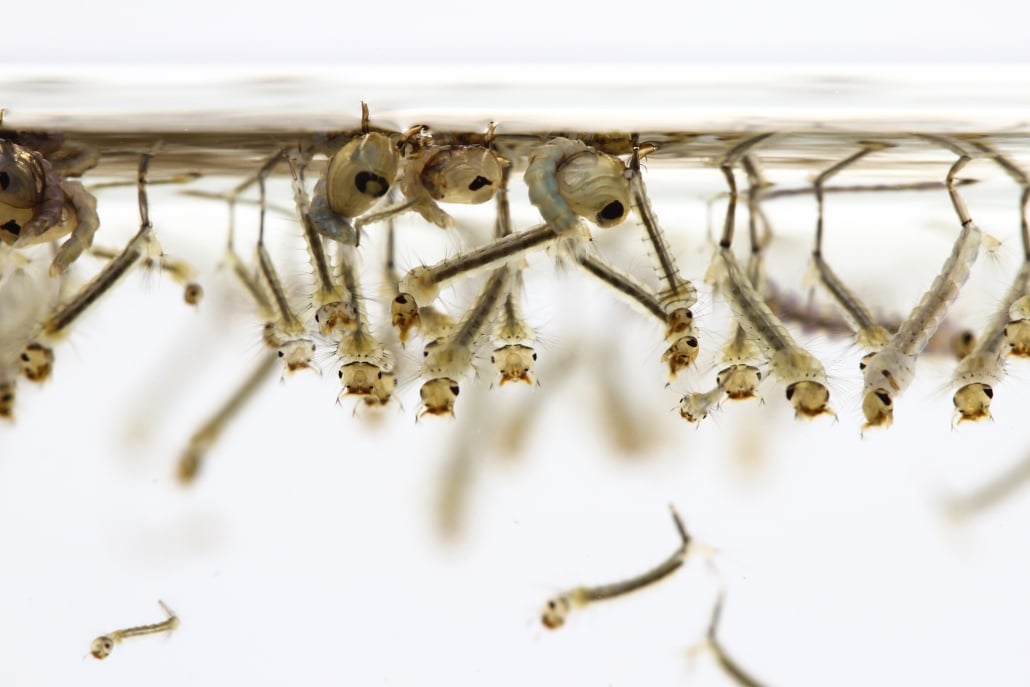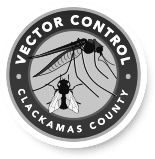Flies
Mosquitoes
A vector is any arthropod, insect, rodent or other animal of public health significance capable of harboring or transmitting the causative agents of human disease (e.g. malaria, plague) to humans. Under certain circumstances, insects or other arthropods that cause human discomfort or injury, but not disease, are sometimes referred to as vectors. The vectors that Clackamas County Vector Control District controls are mosquitoes and black flies. This is done using an Integrated Vector Management (IVM) strategy that includes conducting surveillance, controlling sources and vectors, and public education. The result is a healthier community with a lower risk of disease outbreaks.
FACTS ABOUT MOSQUITOES
- All mosquitoes must have water to complete their life cycle.
- Only seven days are required to complete the mosquito life cycle.
- Mosquitoes do not develop in grass or shrubbery although adults frequently rest in these areas.
- Only the female mosquito bites to obtain a blood meal. The male mosquito feeds on plant juices.
- The female mosquito may live as long as three weeks to several months.
MOSQUITO LIFE CYCLE
Eggs
The most common mosquitoes lay egg rafts that float on the water. Each raft contains from 100 to 400 eggs. Within a few days the eggs hatch into larvae.
Larva
The larva or “wiggler” comes to the surface to breathe through a tube called a siphon. It sheds its skin or molts four times during the next several days. It grows rapidly between each molt. On the fourth molt it changes into a pupa.
Pupa
The pupa or “tumbler” cannot eat. It breathes through two tubes on its back. The adult mosquito grows inside the pupa and in two days or so, when it is fully developed, it splits the pupal skin and emerges to complete the life cycle or metamorphosis of the mosquito.
Adult
The newly emerged adult rests on the surface of the water until it is strong enough to fly away and feed.
MOSQUITO-BORNE DISEASES
The four important diseases affecting humans are West Nile virus, encephalitis, malaria and Chikungunya. Several of the 48 known species of mosquitoes in Oregon can carry diseases under the right conditions. When a female mosquito takes a blood meal, which she uses as nourishment for her developing eggs, she may transmit certain disease-causing organisms to humans and other animals.
Malaria
Malaria is much less likely to occur in Oregon due to the necessity for human reservoirs of the disease. Anopheles mosquitoes, the vectors of malaria, are found in some areas of Oregon, and there have been isolated cases where human reservoirs who have visited other countries temporarily provided a source of malaria infection to local residents.
West Nile Virus & Encephalitis
There are three forms of encephalitis transmitted by mosquitoes in Oregon: West Nile virus, St. Louis encephalitis and Western equine encephalitis. They are carried into the area by wild birds that are infected elsewhere. These birds show no symptoms. Infected birds are then fed on by local mosquitoes that can pass the virus on to humans by future bites. Symptoms of encephalitis range from flu-like illness to severe brain involvement that can cause death. Western equine encephalitis can affect horses and other equine animals as well as humans.
FACTS ABOUT FLIES
- Flies transmit disease to both humans and animals
- They contaminate food and transmit food poisoning diseases
- They are a vector of typhoid fever, dysentery, cholera and other diseases



